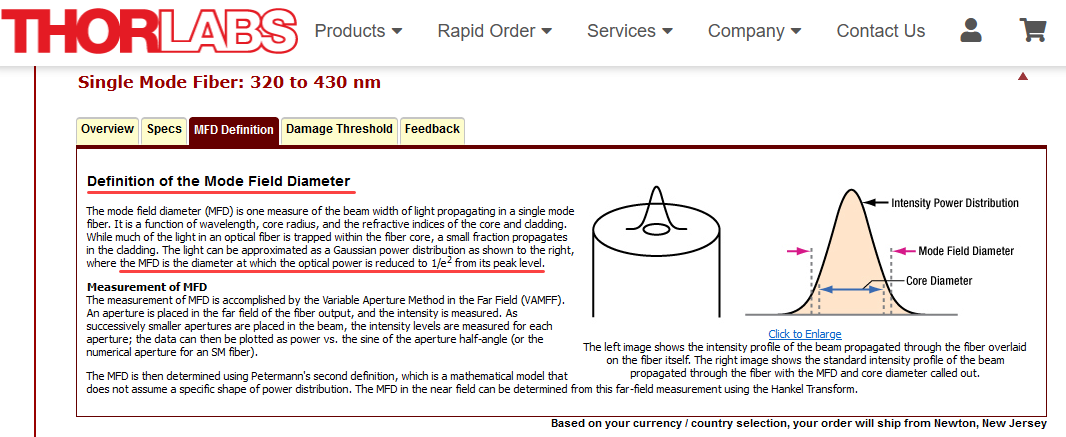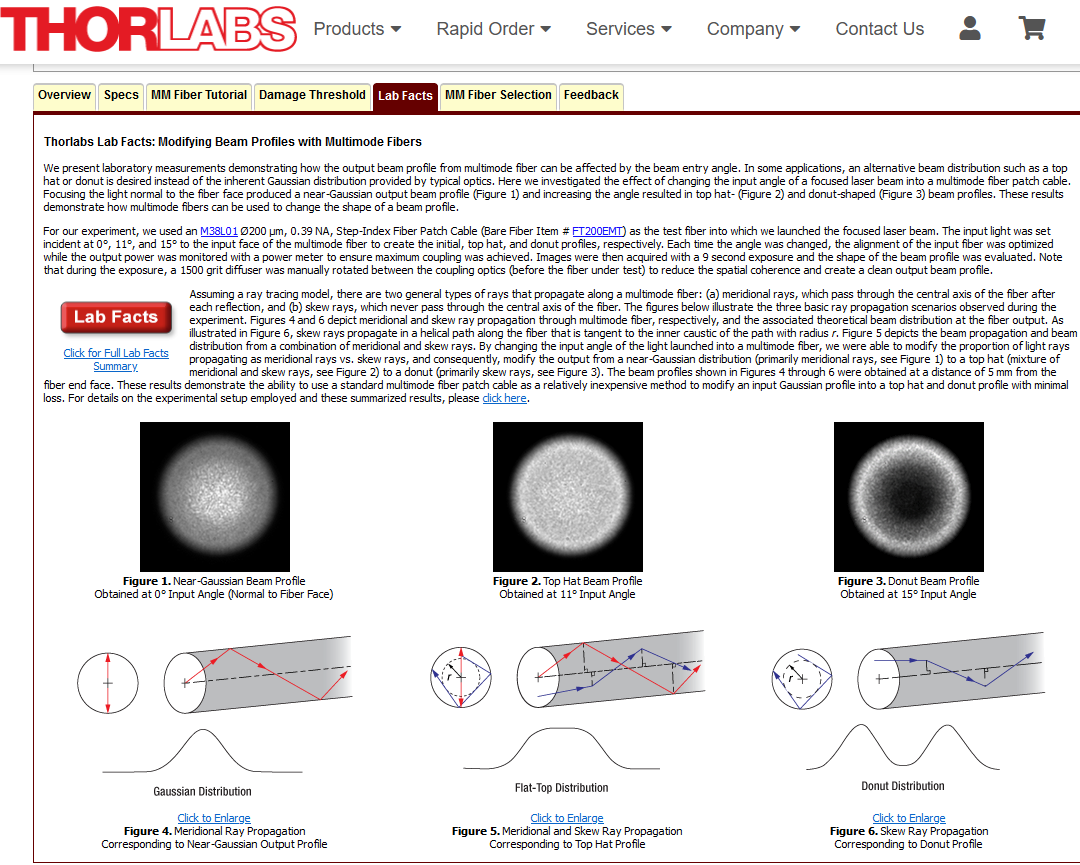Dear all,
I am trying to simulate the spot I would have from a multimode fiber of core diameter d when placed in the focal pont of a lens of focal f on a screen placed at some distance D.
I thought to simulate it with a point object at 0 surface,with 0,00 thickness, place a dummy surface at 1 with thickness f and then place at surface 2 a Lens with thickness D.
Because I know the NA of the fiber I can use the paraxial Gaussian Propagation tool to define a beam with the rigth M2 and initial diameter and achieve from there dthe 1/e^2 dimensions of my beam.
But...shouldn’t I instead consider the surface of the fiber end like a set of points each one sending rays inside the NA and threat the Spot as an imaging of the fiber end on the screen at D?
I mean I would place fields at +/-d and then propagate geometrically and finally achieve the spot image n the screen? The fibel tip is not a point and this would make sense
I am a bit confused..can someone help me?
Thanks
Best regards
Gabriele






